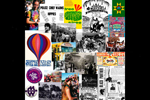The Interview with Arthur Lisch
by Alice Gaillard and Céline Deransart, 1998
[Note: much appreciation for the editing assistance by Jay Babcock,
whose Diggers Docs site is
another source rich in Digger history.]
[playfully, with shirt up over his face] Anonymous deeds, without
being known who we are, mysterious people who travel around the Earth,
doing good deeds to liberate land, liberate people. [revealing face]
Here I am, Arthur Lisch, [laughs] no longer anonymous.
[starts walking tour of peace circle] This entrance, this place to come
in, is a place to come into a circle. The circle is a latter day
initiative that has to do with the Digger philosophy — not just the
Digger philosophy, but the original ‘True Leveller’ philosophy. The True
Leveller philosophy was even further called the Christ Levellers. And
the idea of the True Levellers was that the common land belongs to the
common people who choose to come on that land, care for the land, love
the land, work the land. So in the sense that the initiative was taken
by me 10 years ago, to establish this circle, this is, 30 years later
in 1998, a Digger initiative — this is a True Leveller
initiative. It is, because I say it is [chuckles], and, because that's
my intention. It's a spiritual scientific experiment: to see if a circle
is drawn on the earth, if people will come, and if they will fill that
circle with care, concern, love, work — activity. And [in] the circle
here, that has happened over the last 10 years, with this initiative
called the 'National Peace Site.'
[continuing tour] This is the sign: the 'National Peace Site.' Someday
the intention is to have a name. And so far we have a sort of Zen name
here. We [don't] actually have an actual name, but it's a National Peace
site. Why? Because I say it is. [laughs] People have come to accept it.
This bench is dedicated to a couple who have passed on that worked for
peace and justice. There are four other benches here that have been
dedicated to people who work for peace and justice. This is our board.
That was a labor of love to construct this board, by volunteers who came
forward to do this. This picture here, if you can, can you see this?
This is a sister site that is also a True Leveller initiative in the
middle of Washington DC. It's on the Mall in Washington near the
Washington Monument. This marks the original center of the country, and
there is a peace site being developed there on this barren patch of
earth. These are Native American elders and other spiritual people who
came together in 1995 for a blessing ceremony to spiritually inaugurate
this site. So this is an initiative that is connected to this site here
in the middle of Washington DC on the mall.
This olive tree was planted five years ago by veterans who had been in
Vietnam, had been in Korea — they call themselves Veterans for Peace.
And there, they planted this olive tree, a little olive is growing on
here. And this olive tree — the symbol of offering an olive branch for
peace, that goes along with the symbol of everything that the olive
represents.
This is the Eastern garden. This is the garden that faces to the east.
To the east are developments — parking lots, playing fields, houses. To
the west, rolling hills; further on, the ocean. Now the significance for
me of founding this site here around this old chestnut tree is that in
the east, in that direction, is the Sonoma Mission — the furthest north
that the missionaries brought Catholicism in the 19th century, the
Sonoma Mission, is over there. Over there, the Russians came, bringing
the Orthodox faith over to the coast. And they established a fort, with
a chapel, at Fort Ross. This place is halfway between those two, this is
the halfway point between those two ancient spiritual streams that
separated in the old world between East and West. [They] came together
from the north and south, met here in Sonoma County. So this site has to
do with reconciliation, has to do with the hope that people who have
split in the past can reconcile in the present. Speaking of which, this
is a rose that was planted when the Palestine-Israeli peace accords were
signed. Palestinian people and Jewish people, a large group, gathered
and planted a peace rose together, which is surviving in the eastern
garden.
This is a spiral path. We're spiraling in toward the center. So if you
follow me, we'll come to the center. This is an American chestnut tree
in the center of the circle. [This is] another bench dedicated to a man
who worked for peace and justice. This garden was dedicated two years
ago, this rock garden and these flowers, was dedicated to a man named
Danaan Parry who originated his activity called 'Earth Stewards' here —
[he] went on to travel around the world working in Northern Ireland for
peace, working in Vietnam, digging up landmines, planting trees in their
place. And he had a lot of people that really cared for him. He died two
years ago, and people who care for him put this garden in Danaan's
memory. So there's many things here that are significant.
This is the Western garden. This is a peace pole. This is a birch tree
that was planted by Ukrainian sister city visitors who came here in
relationship to the sister city relationship and they planted that birch
tree about six or seven years ago.
This is the most recent addition: a sculpture called 'Prayer for Peace.'
There was a design competition, 52 people entered the competition. The
person who was chosen is originally from Japan, worked for 20 years in
Croatia, had his studio there. And this is the 'Prayer for Peace'
sculpture that was installed recently. When it's turned on, there's
water that comes from the stone and comes down the stone and sets up
this feeling of expansion and water and growth.
This is a Japanese Black Pine that was planted by the city of Sebastopol
mayor ten years ago for the sister city in Japan that Sebastopol has and
it's gotten that big in ten years.
We're coming toward the center. This chestnut tree, this American
chestnut tree. When I first came here, I was in a state of a sense of
'what has my life meant?' I remember Emmett Grogan writing
'The
Ideology of Failure.' I think he mentioned me in a little essay
about going out to Hunter's Point in San Francisco, with a sculpture
that was installed there where a 14-year-old was shot running across the
field by the police. And I went out there every day for a number of
months to vigil and to meet with people and to try to make a park, back
in 1967. And Emmett mentioned that, and the idea that you need to be
anonymous, you need to be not prideful about your work, you just need to
offer your work and your activity. So this circle, and this tree, was
almost ... It captured my imagination — it was almost dead. But it had a
root system that came down from here. And these leaves weren't here then
— there was just barely a few leaves in the center. And there's been a
resurrection of this whole tree. And whether it was the attention that
people paid to it, or the activity that went on here, it's really
blossomed forth and become quite a symbol of hope for people. It looks
gnarly, and it looks nasty, and it looks like it wasn't going to
survive. A smaller tree was planted here, another chestnut, because the
feeling was this wouldn't survive. But now they're both happily living
here. It's like a little jungle, like a forest.
So what this site is, is a place... [finds something in the tree] Looks
like an Indian arrowhead someone put here. And someone put a penny here
with Lincoln on it. So this place, this circle, is a sacred circle. And
it's a circle of a place where people can, as they did with People's
Park in a more turbulent way, can claim... This is within a county park,
so the people in a sense don't have much to say [about] what goes on
here, except my initiative was just to come here, not ask permission,
and just begin to say, 'There is a circle here. I see a circle. There is
a circle here.' This is before the Parks Department gave permission to
do it. So over the last ten years there's been all sorts of negotiations
and work parties and involvement from people but the the initial
beginning goes back to that poster that was made that said "1% Free" and
showed a couple of Chinese guys standing or, I don't know, Oriental
guys, standing on the corner, just standing there. I once saw Emmett
Grogan after the Haight Ashbury, after 68, 69, I think it was 1970 or
so, actually standing on the street corner in lower Manhattan. And I was
just walking by, I said, Hi Emmett. He [makes motion describing how
Emmett responded]. He's just standing there leaning against the building
like on that poster.
So the idea of being "1% free" means that, to me, we can take that
initiative, we can take that step, and then things will fall into place
around it. This was initially 1% free. It's not 100% free now, but so
many people have come here, worked here, care for the place, they've
claimed this circle of land in the name of community and the name of the
sacred in life, in the name of a higher way of being. So this is a
Digger initiative. As I said, this is a True Leveller initiative. And
even further, it's, as Gerrard Winstanley, said, a Christ Leveller
initiative. In other words, to see the higher in each other, for each of
us to see what is better, what is hopeful, what is possible in each
other. And this small circle is dedicated to that. And it's been a
success up until the present time. It's been well accepted by the
community and thousands of people have been here. In 1998, this is what
I consider to be an extension of the Digger ethic and of the Digger work
here in Sonoma County.
[tour over, asked about how he became involved with Diggers] I came to
San Francisco with my family, my young family. I came from New York
originally, went to British Columbia for four years, bought land, built
a cabin, lived in British Columbia, taught in the school system. And we
decided to take a visit to San Francisco and it was about the middle of
1966. And it was like, for me, falling down the rabbit hole in Alice in
Wonderland. And suddenly, it was a whole different, interesting and
strange world. I felt as though when I was growing up that creativity
and creative people were not respected or were kind of exploited or used
or not given the possibility of coming forth, to be a force in society.
And I felt in San Francisco, as though creative people were coming forth
to do things that were socially important — in a creative way, rather
than rather than just a political way — an artistic, creative, poetic
way. And I did encounter the Mime Troupe, I was interested in the form
of theater The Mime Troupe did. And for employment, I became employed
with the Friends Service Committee, which is a Quaker organization that
hired me and another fellow to work with young people in the streets who
had run away or needed help or needed counseling. I was working as an
artist to do this — they hired me as an artist to do this.
So that was interesting because the Quakers and the Diggers in England,
the original Diggers — the 'True Levellers' — came up at the same time.
And, in fact, Gerrard Winstanley, who wrote most of the Digger material,
very gifted writer — I'm always impressed with his writing
and the things that he says — became a Quaker later in life after the
Diggers. After the few years [when] the Diggers did their witness of
going out on the common land, he became a Quaker himself. So there was
an interesting relationship in England in 1648, 1649, 1650. That's when
the Quakers were coming up too. And the reason that the Quakers were
called Quakers is because they went up on on Pendle Hill, and they would
be outdoors, having their meetings and they'd be experiencing this
outdoors, they were experiencing God, [mimics shaking] and the people
would come and say, look at those Quakers over there, but they called
themselves the 'Friends of the Light.' And the Diggers didn't call
themselves the Diggers — they called themselves the True Levellers.
But then people said, Oh, look at those diggers over there, so that
became the name that was applied to them.
But the Diggers went on St. George Hill, which I tried to find when I
went to England. It's in a subdivision now, I don't know if you've ever
looked into that, where that location would be now... But the Pendle
Hill of the Quakers and St. George Hill where people would go up on a
hill and be closer to the experience of the spiritual and of God — this
[here] has a little bit of that feeling... It's not a high hill, but
there's a little feeling of a special place here.
So when I was working for the Quakers I became more and more aware of
people doing interesting creative things. Became aware of the food, went
down to see the food that was being served in the park, began to help
cook it... It was very interesting to get involved with that. And it was
mysterious because [one] didn't know quite who was doing it... So, I
became more and more involved in that activity.
[asked about All Saints Church] Well, yes, and Emmett didn't like that
very much, I gather from things that he said, both in papers that were
written and... He didn't like the idea of going to the church and
being... But it was interesting because Father Harris, at All Saints
Church, was very courageous in doing that. Within his congregation,
within his church, he had to take a bold stand in order to bring the
Diggers in, allow for the kitchen to be used for baking bread, allow for
a phone to be used for referrals. Lots of activities went on there, even
though it wasn't a true Digger activity, in a certain sense, in that it
was in an organized church... Father Harris had to take a lot of risks,
and he lost many people in his congregation who were very angry that
these people would be coming in off the street, and... And he said,
Well, this is the Christian mission, is to serve people in need. And
there are thousands of people [in need] and besides, what the Diggers
are doing is very worthy. We want to support it. So I found Father
Harris to be a unique personality and quite courageous. And he was
always supportive of the Digger ideas. The more he found out, the more
he became involved. And yes, there was an office and lots of things went
on through that. There were some dances and there were community
meetings. A lot of bread was baked in coffee cans and hundreds and
hundreds of loaves. So it was a facility that went through a lot of a
lot of uses. It was used in many ways.
[Asked to restate] Well, the Digger activity at All Saints Church was
something that Father Harris at the church decided to open his doors to,
so that it could be an office, it could be baking, there could be
dances, community meetings. And for Father Harris, it was quite
courageous. He lost many people from his congregation who were angry
that these rabble would be coming in off the street and using the
facilities in that way. But there were hundreds of people coming in,
there was all sorts of use made of it. It was a full, rich, huge use of
the church hall and the church facilities. And I think that even though,
especially Emmett, and some of the Diggers found this to be too
organized or coming to be within the church, they found uncomfortable.
I've been thinking about that, and I'm concentrating on the courage that
it took for that individual to open this up. Because everybody had their
own threshold. Everyone had their own uncomfortable areas that they had
to find the courage to open up to the reality that was coming about. It
was a tumultuous time and it wasn't comfortable and there were a lot of
difficulties. I found Father Harris's church to be very open and
understanding and warm and caring.
[asked what interested him in the Diggers] What I saw is that the
Digger/True Leveller activity was an art form, in itself. It was a kind
of art form, a social art form that wasn't the old form of performers
performing for people. But it was people calling forth the creativity in
themselves and each other to do social art activities.
Now a good example of that was the Invisible Circus. I was very involved
with initiating that, the Invisible Circus. It was done at a church in
San Francisco, a Methodist church building. And the poet Richard
Brautigan and I spent many months. The idea was that for a three-day
event, we would call as many people as possible, all sorts of people,
all sorts of groups, whatever we could think of, we'd call and say
you're invited to come to this. So we were just inviting people from the
whole spectrum of San Francisco. The experiment was, what would happen
if you bring all these people together in one place for three days. So I
don't know if you heard of that event, but what it did was, it changed
Glide Methodist Church, from what it had been into a new form, what
Cecil Williams calls a celebratory…. I think he's the 'Minister of
Celebration,' and they do a great deal of feeding people, services for
the community. So in some very tangible ways they took on the Digger
activity — the True Leveller activity was brought into Glide through
this event, and they incorporated a great deal of it into the regular
programs at the church. I think the Invisible Circus had a great effect
in that way. It was a raucous wild event. It did go on for three days.
By the third day many people had left, but there were still people
coming to the regular service on Sunday. One thing that I remember doing
was playing a game where when you go to church, you pass the plate up
and down the aisle and people put money in. So we went up and down the
aisle before they collected and we had a collection. People put money in
and then we took the money and passed it out to people again. Said well,
you know, take what you want out of the collection plate and it was
passed around and people were taking money out. So it wasn't just the
church getting the money — it was the money going back, and people
taking money from. So there were many different kinds of things that
happened during that three days. It was an extraordinary event. It was a
form of art, it was a form of celebration and liberation that was an art
form. And that's what I began to be interested in. It was theater that
went beyond the usual form of theater.
Another thing that I did with Ron Thelin was travel for three months
from San Francisco. Our initial goal was to go to the Pentagon. And the
idea that was concocted was that there would be a circle of people
around the Pentagon, and made a sort of a joke that there would be an
ancient word, an ancient symbol, a syllable that would be spoken. And
the Pentagon would rise up off the ground, it would be exorcised from
its control and power. And that actually did happen, there was actually
a circle of people all the way around the building. Now, they weren't
necessarily all people going to protest, there were many people with
bayonets, who were posted all around the building. The night before, a
fellow named Samurai Bob and I, he was in Washington at the same time,
walked around the entire Pentagon, the outer limits, he was playing some
sort of flute and I was doing whatever I was doing, we walked around.
And then the night, when the troops were stationed with the bayonets,
there was a fellow named Super Joel, putting a flower in one of the
bayonets. And I think other people might have done that, too. But we
walked all the way around, looking at each National Guard person who was
standing around there, some of them would begin to shake and vibrate and
actually jump out of the line. And they couldn't hold that position.
They were young Americans who are guarding this. But it was too much for
them, when we looked in each other's eyes. So we went all the way
around. It's a huge building. So going around took quite a long time. So
I think in a sense, the building did raise up off the ground, there was
a raising, there was an exorcism of that building. And it was a success.
In that sense, it was a peace initiative that succeeded.
[Asked about getting ready for runaway kids who were arriving] The word
went out [that] San Francisco was a place to come to and young people
began to think, well, here's a place that we can be creative, we can
feel joy, we can have a new way of life. But we were there. And we knew,
like Chester Anderson wrote in the Communications Company paper, that
was put out, [that] the street life is very nasty and terrible things
happen to young people to come here. You've got to be very careful. This
is the street, this is tough. There are difficulties — don't come with
illusions. We know what it is. So we knew that... it was cold at night.
We knew that there wasn't necessarily enough food, there were drugs,
there was dirt, there was health problems, there were diseases. So all
those things needed to be addressed. People like David Smith took it
very seriously in terms of making medical facilities available to people
and working very hard to do that and bore a great deal of the brunt of
that. The warning to the city was we need to prepare in adequate ways so
people can find places to be. So it was realistic, telling the city
there needed to be preparations for that. Roy Ballard, who helped to
operate the Black Free Store in the Fillmore, and I went to some
interfaith church meeting and made that statement and I think that's
[how] word got out in the newspapers and got around but... It was true —
there needed to be a lot of realistic preparations and the Diggers
people for their part did as much as they could, but it was a tremendous
job. A lot needed to be done. [End] —posted 2024-01-21

[Feel free to send any comments, additions,
corrections, &c. to the
curator of the Digger Archives]
|
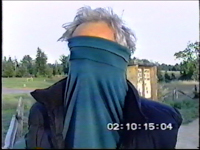










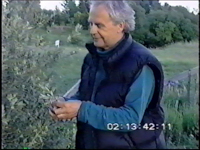


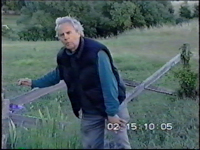








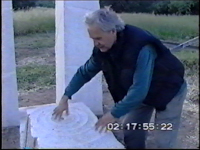

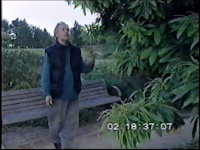



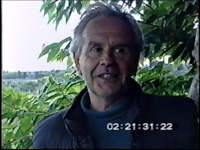
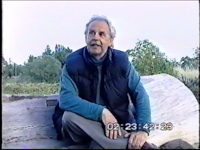






|
